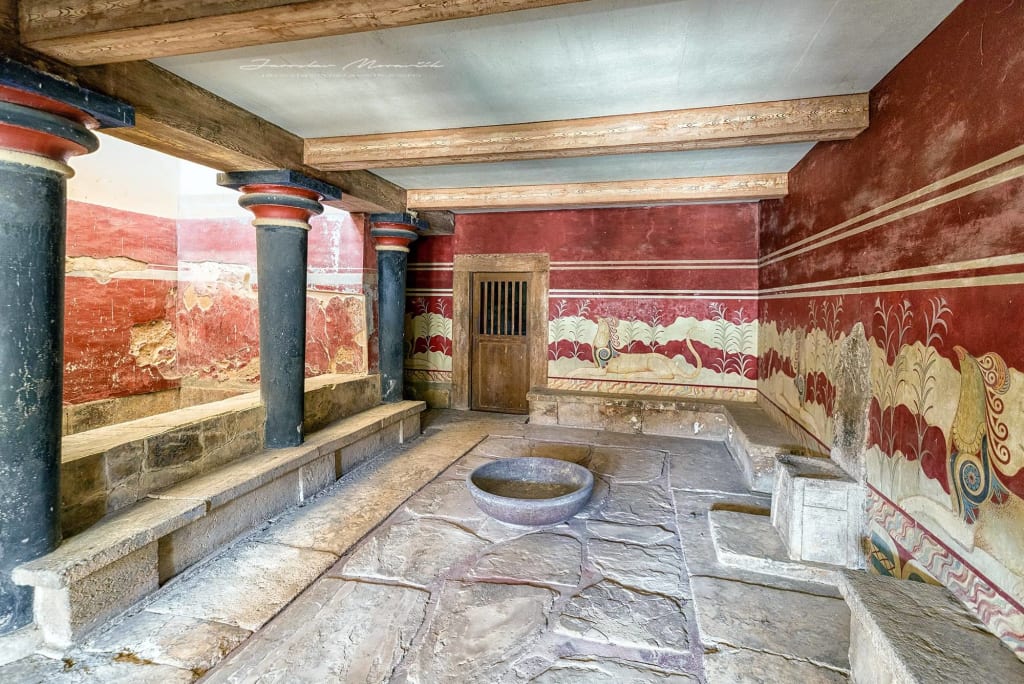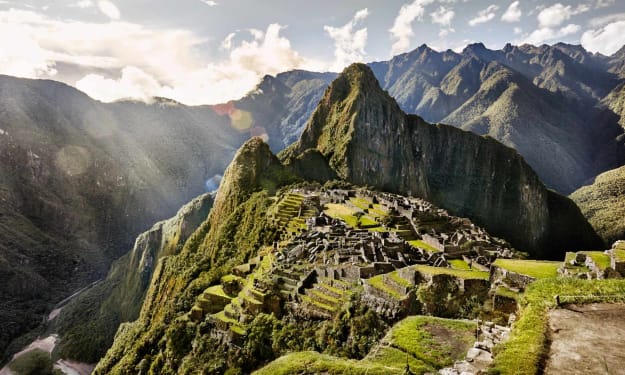
This prehistoric archaeological site is located just outside the island's capital city, erected by the Bronze Age Minoan civilization on Crete. Though there is nothing much left of the palace but exploring the ruins of this fascinating place sounds interesting.
Its history dates back to 7000 B.C, and it happens to be the largest in Knossos around the bronze age, covering about 150,000 square feet (14,000 square meters)the size of more than two football fields. after it was destroyed by natural hazard the second palace was built on top of it. there were several phases of renovation and change that occurred over a period of centuries.
The palace likely suffered disruption around 1600 B.C., when the eruption of a volcano on Thera caused a tsunami that hit parts of Crete. The palace was hit with another catastrophe (of some form) around 1450 B.C., when sites across Crete were destroyed and a people who modern-day scholars call the "Mycenaeans" occupied Knossos. The final destruction of the palace probably took place sometime before 1300 B.C. The building was ravaged by a fire which triggered the collapse of the upper stories. It is not known whether this final destruction was intentional or the result of a natural disaster such as an earthquake. While parts of the palace may have been used for later ceremonies and the town of Knossos saw a resurgence around 1200 BC, the building and its associated institutions were never restored. The second Palace, a large part of the stupendous bulk of the previous structure would be lightened up through primary developments and perplexing subtleties, and the preference for hued stone would be halfway replaced by illustrative wall works of art
The palace was excavated a century ago there are still many questions that researchers have about the palace and the people who lived in it.
The Palace has a fascinating Layout The 1,300 rooms are connected with passages of shifting sizes and directions, The 6 acres (24,000 m2) of the Palace incorporated a theater, a primary entry on every one of its four cardinal faces, and broad storerooms . Inside the storerooms were huge clay containers (pithoi) that held oil, grains, dried fish, beans, and olives. A considerable lot of the things were processed at the castle, which had grain factories, oil presses, and wine presses. Underneath the pithoi were stone openings that were utilized to store more important items, like gold.
The Throne Room is a highlight, with stunning frescoes that have survived for thousands of years, with the actual use of the room unclear but there are theories around it, that it might have had the seat of a priest-king or a queen or A room reserved for the epiphany of a goddess, who would have sat in the throne. Additional speculation is, since the indentation of the seat seems to be shaped for a woman's buttocks, that the throne was made specifically for a female individual. but its all speculation. this kinds of places are interesting with a lot of history although some of the information may be missing due to deconstruction
About the Creator
Ntokozo Mvuni
Interesting stories 📚
Read to get intrigued
Enjoyed the story? Support the Creator.
Subscribe for free to receive all their stories in your feed. You could also pledge your support or give them a one-off tip, letting them know you appreciate their work.






Comments
There are no comments for this story
Be the first to respond and start the conversation.